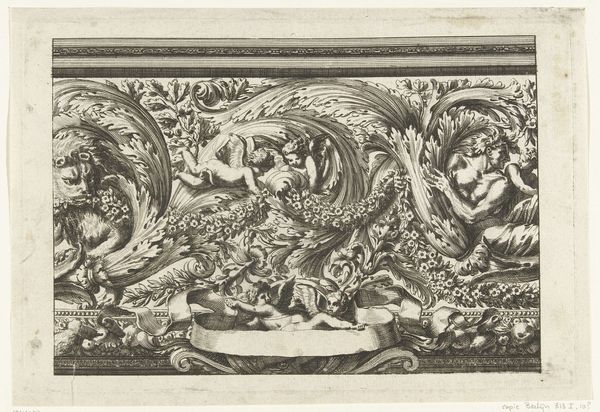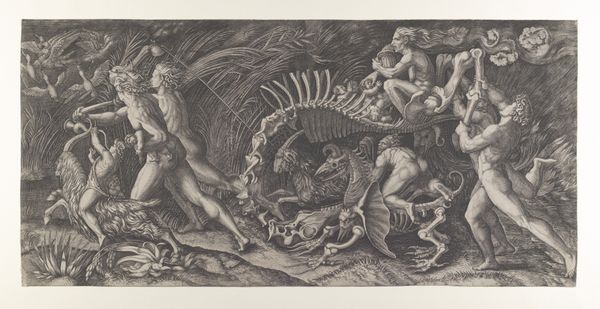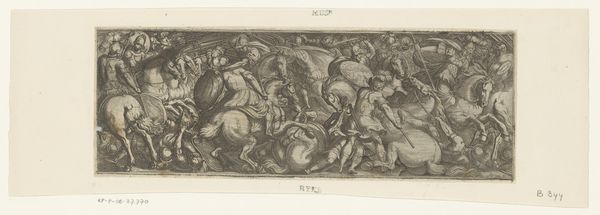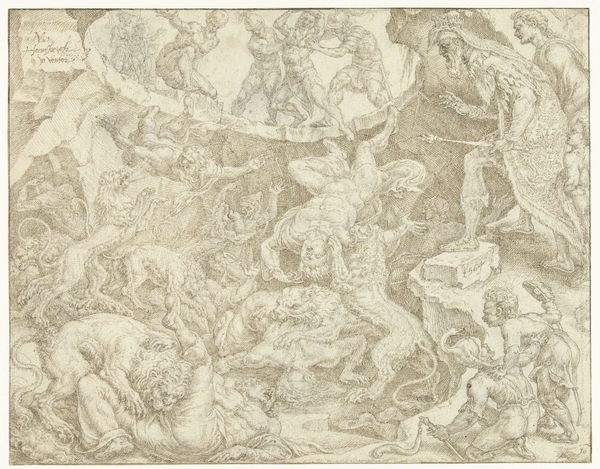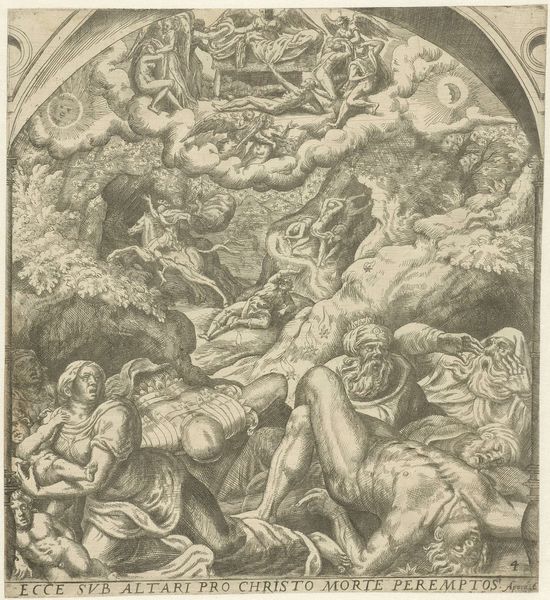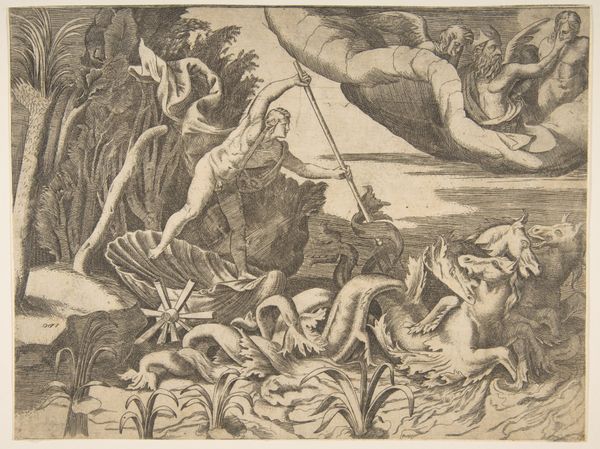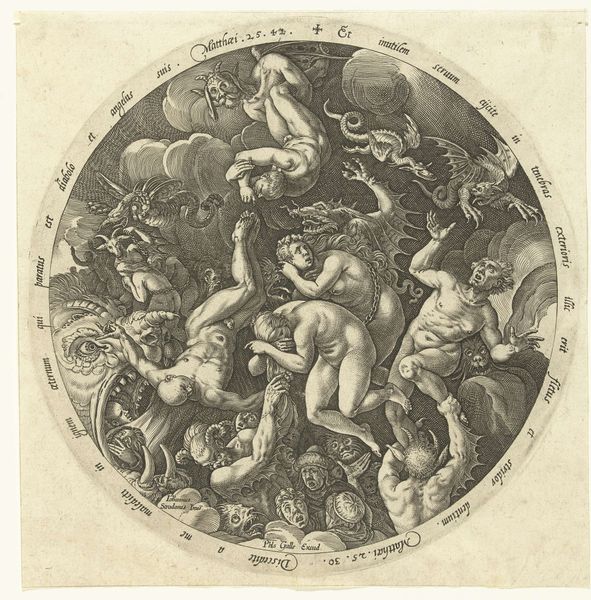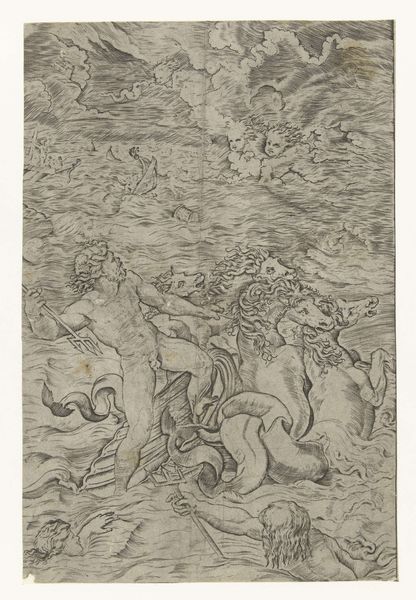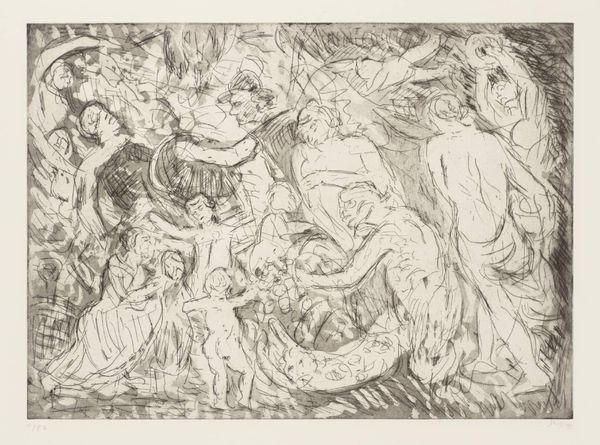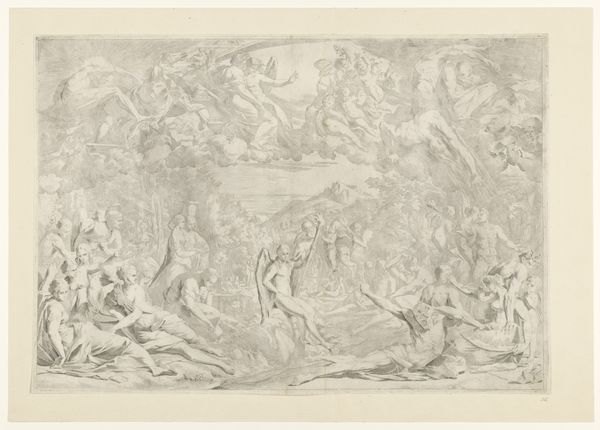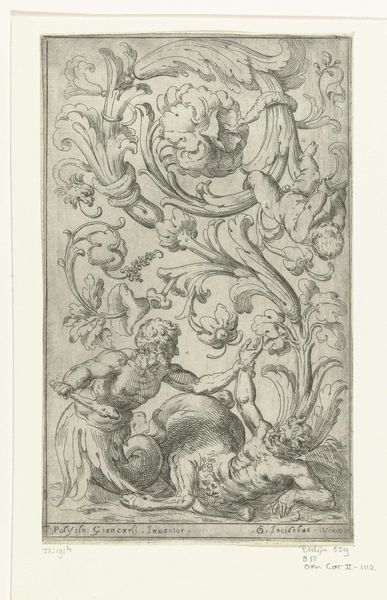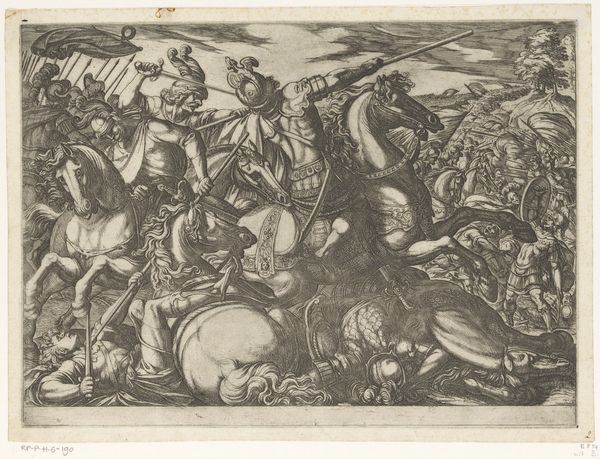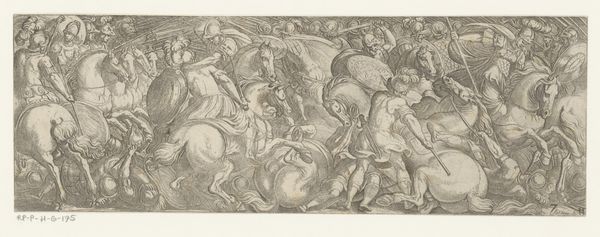
print, intaglio, engraving
#
allegory
# print
#
intaglio
#
mannerism
#
figuration
#
history-painting
#
engraving
Dimensions: height 133 mm, width 400 mm
Copyright: Rijks Museum: Open Domain
Here we see 'The Triumph of Neptune', made as an engraving by Marco dell'Angolo del Moro. Engraving is an intaglio process. A metal plate is covered with a waxy ground, then the artist scratches away the ground to expose the metal. The plate is then submerged in acid, which bites into the exposed areas, creating lines. Ink is applied to the plate, filling the etched lines, and the surface is wiped clean. Finally, paper is pressed against the plate with great force, transferring the ink from the etched lines to the paper, resulting in a print. The incisive lines define a sinuous aquatic pageant, celebrating Neptune. The material qualities inherent in engraving lend themselves well to rendering such dynamism. The fine, precise lines can capture intricate details and textures, allowing for the depiction of the muscular bodies of mythological figures, the churning waves, and the fantastical sea creatures that populate Neptune's realm. Engravings like these were luxury goods, requiring the skilled labor of trained artisans, and the use of specialized tools and materials. The value of the print resided not only in its aesthetic appeal but also in the labor and skill required to produce it. The artistry involved elevates it beyond mere reproduction, blurring the boundaries between craft and fine art.
Comments
No comments
Be the first to comment and join the conversation on the ultimate creative platform.
